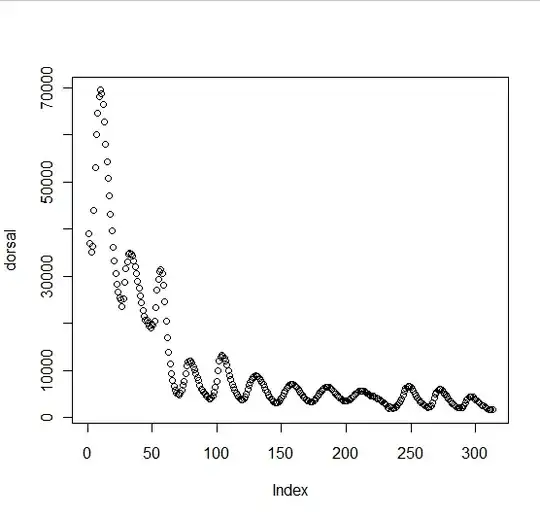I have a signal, of varying amplitude, and after a certain point in time, I expect to see the period of this signal lengthen. I am looking for a way to measure the lengthening of this period.
Is this a way I can calculate the instantaneous period of the signal below, at any given point? For example, at index 220 I would expect the period to be roughly 40 units, whereas at index 50 I expect it to be 24 units.
I imagine the solution relates to either Fourier Transforms or Match Filtering, but I have little practical experience of either of these, so would appreciate any guidance. I am currently using R, but willing to consider other tools if they can help solve this problem.
